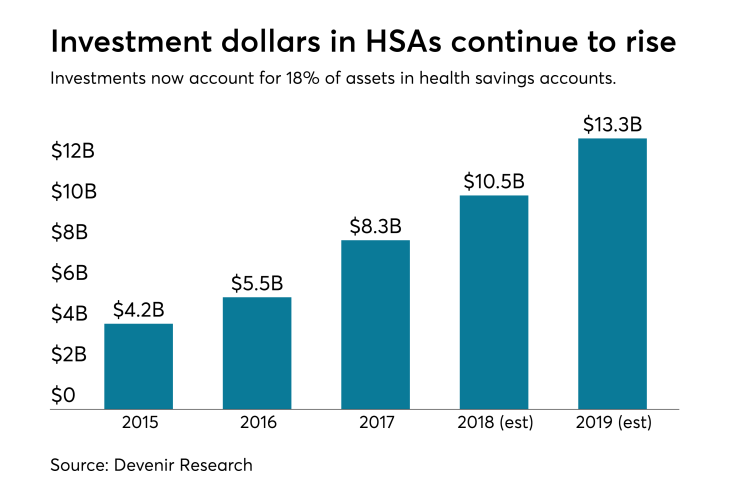High-deductible health plans are on the rise as a growing number of employers turn to consumer-directed health plans to try to curb costs — the portion of employees enrolled in HDHPs rose from 26.3% in 2011 to 39.3% in 2016, according to the latest statistics from the National Center for Health Statistics.
Employers that have gone the HDHP route typically offer a qualified plan that includes a
Treat HSAs more like a 401(k) than an FSA. It’s easy to understand why employees might confuse an HSA with a
See also:
HSAs are likely to keep growing in popularity and may even be available to more people in the near future. There is bipartisan support for improving the way HSAs work, including allowing HSAs to be used for

Unfortunately, many employees aren’t getting the full benefits of their HSA. An Employee Benefits Research Institute study showed that most employees used their HSAs as “specialized checking accounts” for large expenses throughout the year, such as deductibles, copayment and coinsurance, rather than saving for the future. Instead, employees should consider contributing the maximum to their HSAs to use funds for current and future healthcare expenses. The opportunity to set aside pre-tax money for expenses in the future is an area where the HSAs and retirement plans, like 401(k) and 403(b), start to blend together in an
Use HSAs as an investment strategy for retirement. Unlike other benefit plan spending accounts, HSAs are controlled by the employee. They decide if and how much of their money is deposited into the account. They also determine when and how the money is used. The balances roll over from year to year, and can grow over time through additional contributions and any realized investment gains.
See also:
In addition, employers can contribute tax-free dollars if they choose — all of which is employee money. HSAs offer a triple tax advantage: the deposits and contributions are tax-deferred, growth is tax-deferred and withdrawals are tax-free if the money is used for qualifying medical expenses. This is even better tax treatment than the typical
For many employees looking to build up their retirement savings, this triple tax advantage puts an HSA as a complementary strategy with their retirement plan. The two accounts should be used to create a post-retirement savings strategy. For employers, this means the conversation you’re having about contributing to retirement plans should blend with the conversation you’re having about HSAs.
Use education to reduce the stress about HSAs. Helping employees understand how and why to invest in an HSA as part of a short-term payment strategy and a
Employees should be encouraged to contribute the maximum to their HSAs: $3,450 for individuals; $6,900 for families. They should also understand what “qualified medical expenses” are: generally, payments for prescriptions (not over-the-counter drugs), imaging, medical equipment, doctor visits and other out-of-pocket expenses that insurance doesn’t cover. In addition, HSAs can be used for COBRA coverage, long-term-care insurance, health insurance while receiving unemployment compensation, and insurance while eligible for Medicare (other than for Medigap), all tax-free.
In the push toward more consumerism, it’s imperative that employees understand how HSAs work. Contributing to one could greatly offset costs of healthcare today as well as later in life.





